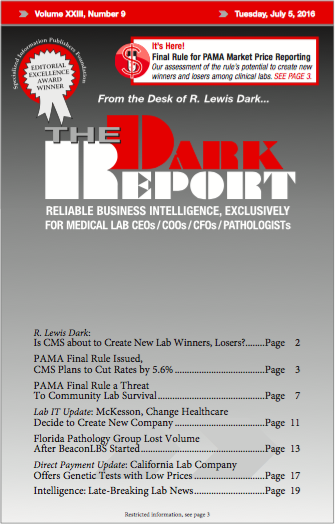CEO SUMMARY: Will implementation of the final PAMA private payment rate reporting rule for labs put smaller, community labs at financial risk? Yes, says the National Independent Laboratory Association (NILA). By deliberately setting a standard to exclude private payer payment data from hospital outpatient and outreach labs that receive payments off the CLFS, CMS will …
PAMA Final Rule a Threat To Community Lab Survival Read More »
To access this post, you must purchase The Dark Report.


